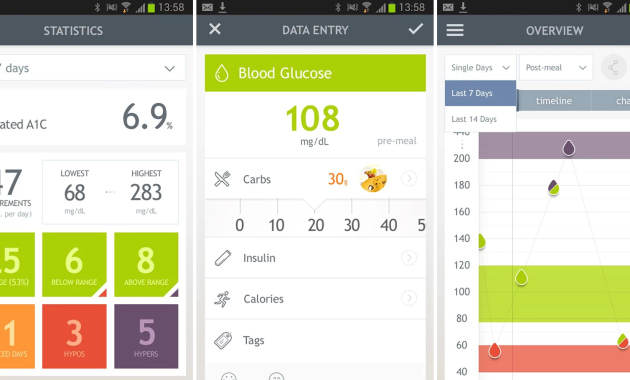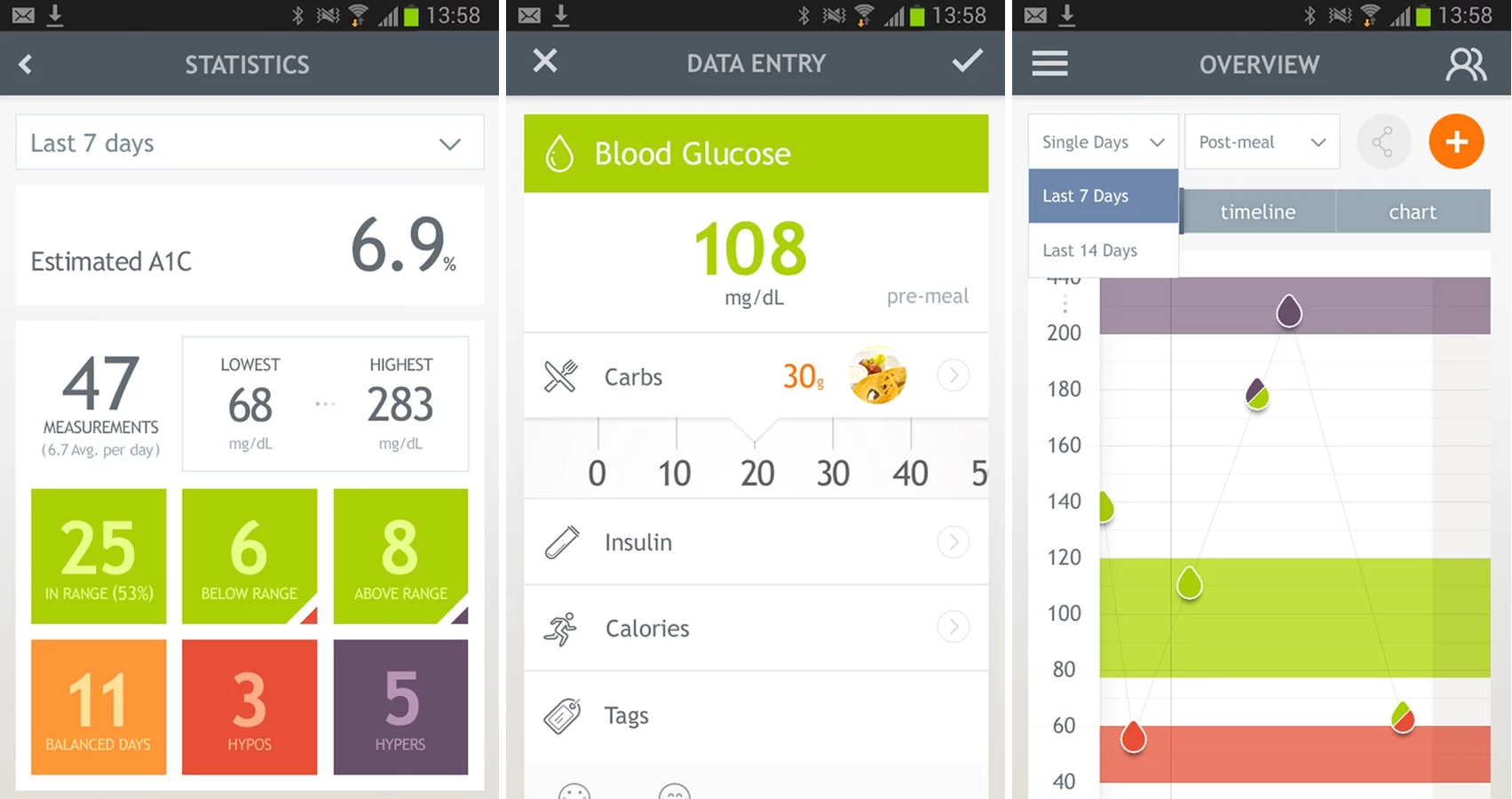
Diabetes Tracking Tools You Should Be Using: A Guide to Better Management
Managing diabetes can feel like navigating a complex maze. From monitoring blood sugar levels to tracking food intake and exercise, the daily demands can be overwhelming. Fortunately, technology has stepped in to simplify this process, offering a range of diabetes tracking tools designed to empower individuals with diabetes to take control of their health. This article explores the essential diabetes tracking tools you should be using to optimize your diabetes management, providing clarity, actionable advice, and a glimpse into how these tools are revolutionizing diabetes care.
The Evolution of Diabetes Management
The landscape of diabetes management has dramatically evolved. Gone are the days of relying solely on paper logs and manual calculations. Today, a wealth of digital tools are available, transforming how people with diabetes monitor and manage their condition. These tools range from simple apps that track blood glucose to sophisticated systems that integrate data from multiple sources, offering a holistic view of a patient’s health. This shift towards digital diabetes tracking tools has the potential to improve adherence to treatment plans, enhance communication with healthcare providers, and ultimately, improve health outcomes.
Essential Diabetes Tracking Tools for Daily Use
Several types of diabetes tracking tools are essential for effective diabetes management. These tools can be categorized based on their primary function, though many offer integrated features.
Blood Glucose Monitoring Systems
At the heart of diabetes management lies blood glucose monitoring. Traditional glucose meters are still widely used, providing immediate readings of blood sugar levels. However, many newer systems offer advanced features such as data storage, trend analysis, and connectivity to smartphones. Continuous Glucose Monitors (CGMs) represent a significant advancement, providing real-time glucose readings and alerting users to potentially dangerous high or low blood sugar levels. These devices are often used in conjunction with insulin pumps, creating a closed-loop system that automatically delivers insulin based on glucose readings. Choosing the right blood glucose monitoring system depends on individual needs, lifestyle, and healthcare provider recommendations.
Food and Nutrition Trackers
Diet plays a crucial role in diabetes management. Food and nutrition trackers help individuals monitor their carbohydrate intake, calorie consumption, and macronutrient balance. These apps often feature extensive food databases, allowing users to log meals and snacks quickly. Some apps also provide insights into portion sizes and offer personalized meal planning suggestions. By tracking food intake, individuals can identify patterns, make informed dietary choices, and better manage their blood sugar levels. Popular food tracking apps include MyFitnessPal, Lose It!, and Carb Manager, all of which offer varying levels of diabetes-specific features.
Activity and Exercise Trackers
Physical activity is another vital component of diabetes management. Exercise can improve insulin sensitivity, helping the body use glucose more effectively. Activity trackers, such as fitness trackers and smartwatches, monitor steps taken, calories burned, and activity levels. Some trackers also integrate with other health apps, providing a comprehensive view of a user’s overall health. Integrating exercise tracking with other diabetes tracking tools allows for a better understanding of how physical activity impacts blood sugar levels and overall diabetes management. This data can be used to tailor exercise routines and optimize diabetes care strategies.
Medication Reminders and Loggers
Consistent medication adherence is critical for managing diabetes. Medication reminder apps help individuals stay on track with their medication schedules, sending alerts and reminders at the appropriate times. Some apps also allow users to log their medication doses, providing a record of medication usage. These tools can be particularly helpful for individuals taking multiple medications or those who have difficulty remembering to take their medications. They contribute to better glycemic control and reduce the risk of complications.
Advanced Diabetes Tracking Tools and Technologies
Beyond the basic tools, several advanced technologies are reshaping diabetes care.
Insulin Pumps and Continuous Glucose Monitors (CGMs)
As mentioned earlier, insulin pumps and CGMs are powerful tools for managing diabetes. Insulin pumps deliver insulin continuously throughout the day, mimicking the function of the pancreas. When integrated with a CGM, these systems can automatically adjust insulin delivery based on glucose readings, providing a closed-loop system. This technology can significantly reduce the burden of manual insulin injections and improve glycemic control. The integration of these diabetes tracking tools offers the most advanced level of diabetes management available today.
Data Integration and Analytics Platforms
Many diabetes tracking tools can integrate data from various sources, creating a comprehensive view of a patient’s health. These platforms often include features such as data visualization, trend analysis, and personalized insights. Healthcare providers can use these platforms to monitor patient progress, identify potential issues, and adjust treatment plans accordingly. Patients benefit from a more holistic understanding of their diabetes, enabling them to make informed decisions and take a more proactive role in their care. The use of data analytics represents a significant step forward in personalized diabetes management.
Telehealth and Remote Monitoring
Telehealth platforms and remote monitoring tools are increasingly used in diabetes care. These platforms allow patients to connect with healthcare providers remotely, enabling virtual consultations, remote glucose monitoring, and ongoing support. This technology is particularly beneficial for individuals who live in rural areas or have difficulty attending in-person appointments. Remote monitoring can improve access to care, enhance patient engagement, and facilitate timely interventions. This integration of technology offers a more accessible and convenient way to manage diabetes.
Choosing the Right Diabetes Tracking Tools
Selecting the right diabetes tracking tools depends on individual needs and preferences. Consider the following factors when choosing tools:
- Type of Diabetes: The type of diabetes (Type 1, Type 2, or gestational diabetes) will influence the tools needed.
- Lifestyle: Consider your daily routine, activity level, and dietary habits.
- Technological Proficiency: Choose tools that are easy to use and align with your comfort level with technology.
- Healthcare Provider Recommendations: Consult with your healthcare provider to determine which tools are best suited for your specific needs.
- Cost and Accessibility: Consider the cost of the tools, as well as their availability and compatibility with other devices.
It’s also important to remember that diabetes tracking tools are just that – tools. They are most effective when used in conjunction with a comprehensive diabetes management plan, including regular check-ups, healthy eating, and physical activity.
Maximizing the Benefits of Diabetes Tracking Tools
To get the most out of diabetes tracking tools, consider these tips:
- Set Realistic Goals: Start with achievable goals and gradually increase your efforts.
- Be Consistent: Use the tools regularly to track your data accurately.
- Review Data Regularly: Analyze your data to identify patterns and trends.
- Share Data with Your Healthcare Provider: Provide your healthcare provider with your data to facilitate informed decision-making.
- Stay Informed: Keep up-to-date with the latest advancements in diabetes tracking tools and technologies.
The Future of Diabetes Management
The future of diabetes management is bright, with ongoing innovations in technology promising even more effective and personalized care. Artificial intelligence (AI) and machine learning are being used to develop predictive models that can forecast blood sugar levels and optimize treatment plans. Wearable sensors are becoming smaller and more discreet, providing continuous monitoring with minimal inconvenience. The integration of these technologies will likely lead to improved health outcomes, reduced complications, and a better quality of life for people with diabetes. The evolution of diabetes tracking tools will continue to reshape the landscape of diabetes care.
Conclusion: Embracing Technology for Better Diabetes Management
Diabetes tracking tools are essential for anyone looking to effectively manage their diabetes. By embracing these technologies, individuals can gain valuable insights into their health, make informed decisions, and take a more proactive role in their care. From blood glucose monitors to advanced data platforms, the tools available today are empowering people with diabetes to live healthier, more fulfilling lives. Consulting with your healthcare provider and staying informed about the latest advancements will ensure you are utilizing the most effective tools for your individual needs. Embracing these technologies is an investment in your health and a step towards a brighter future for diabetes management.
[See also: Related Article Titles]

